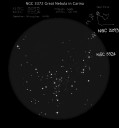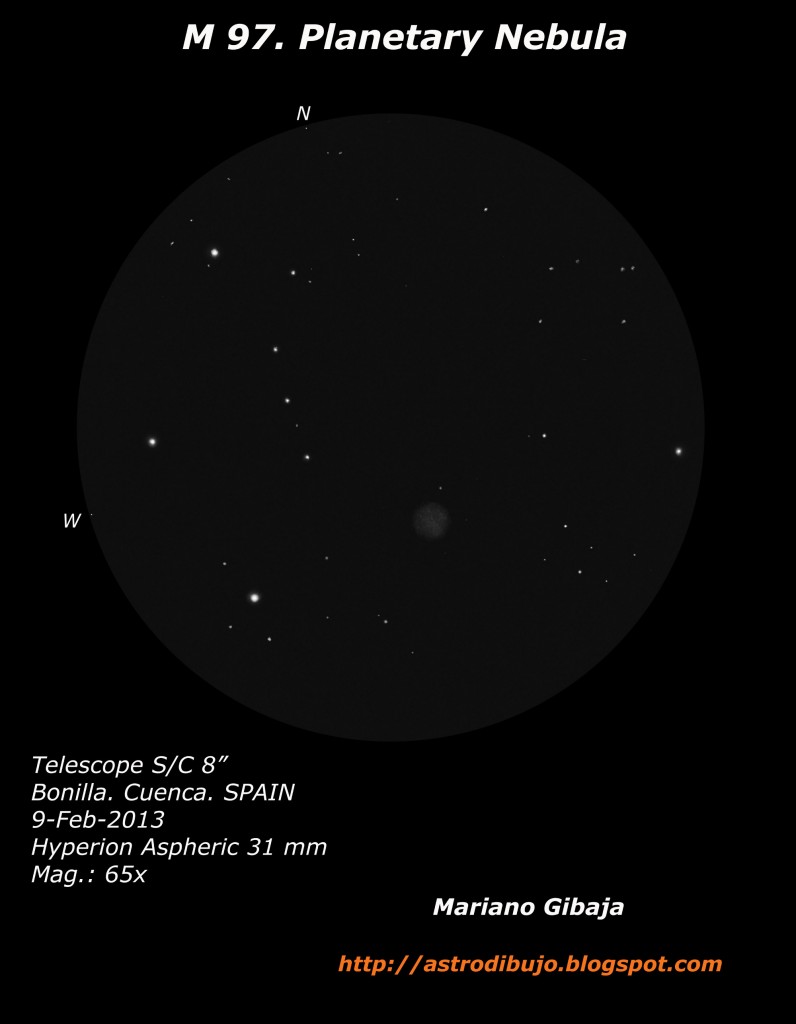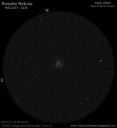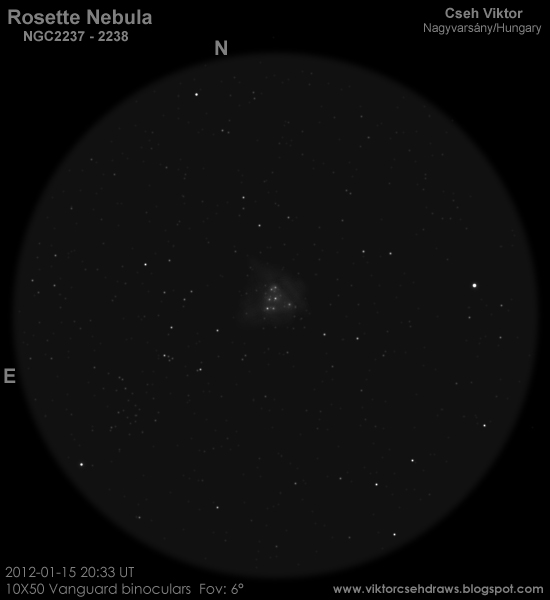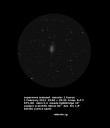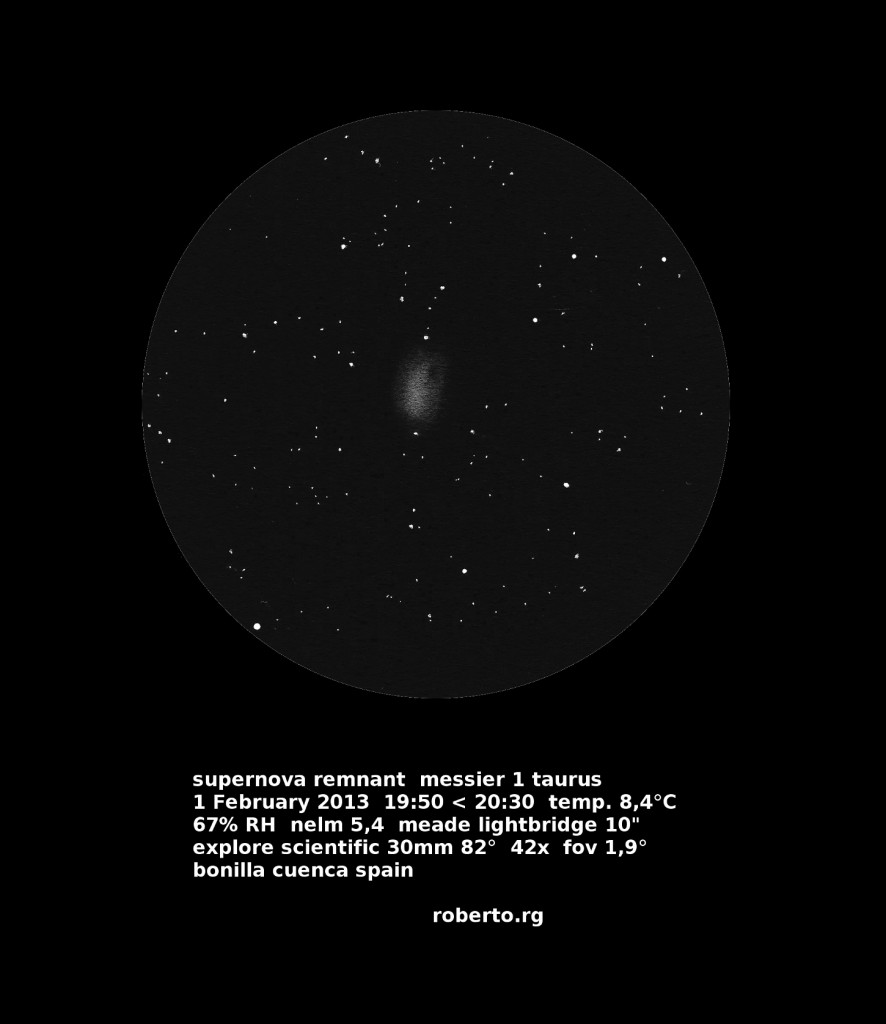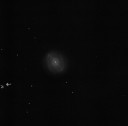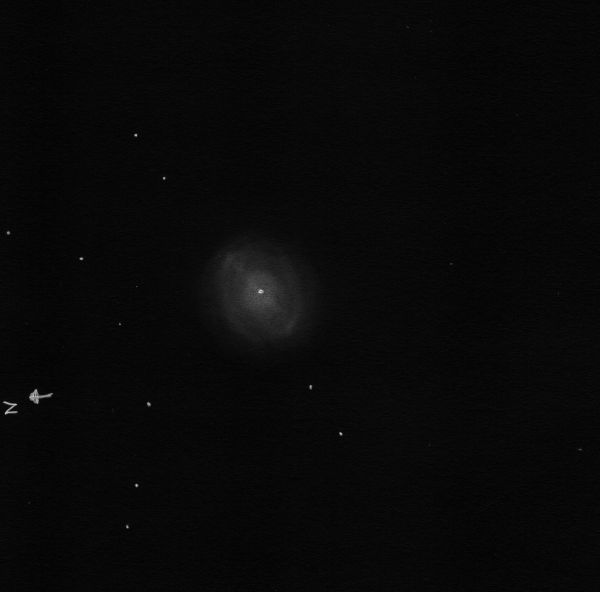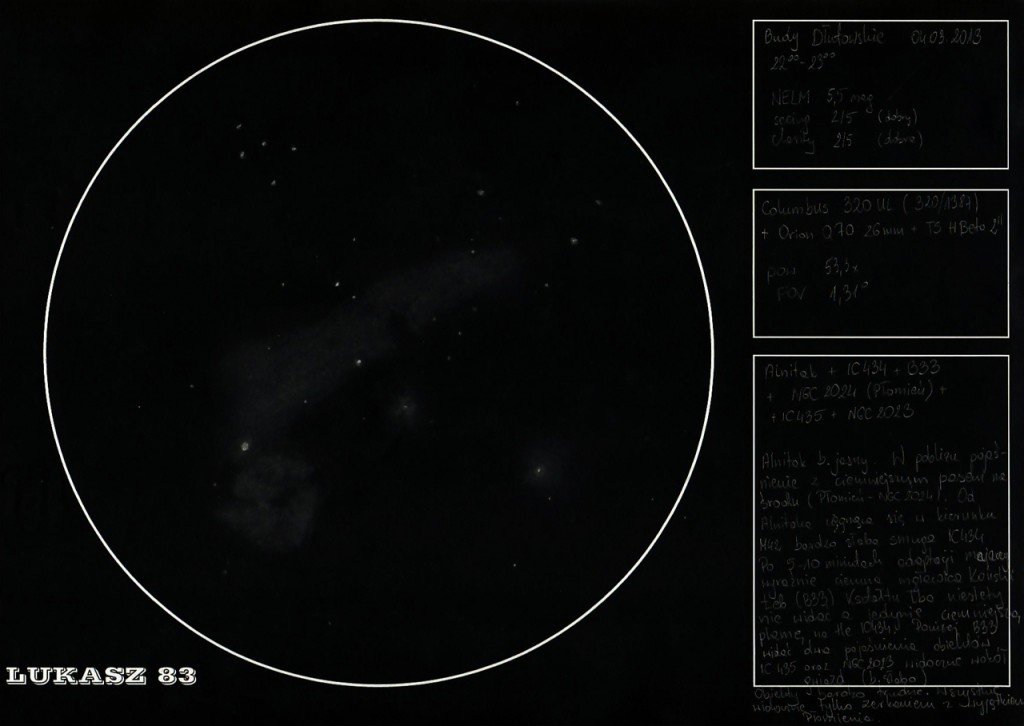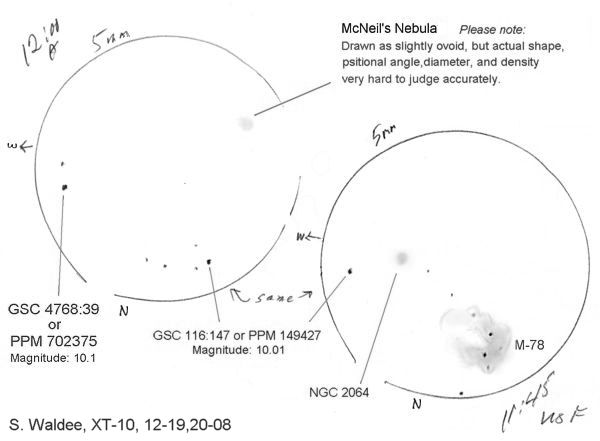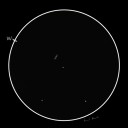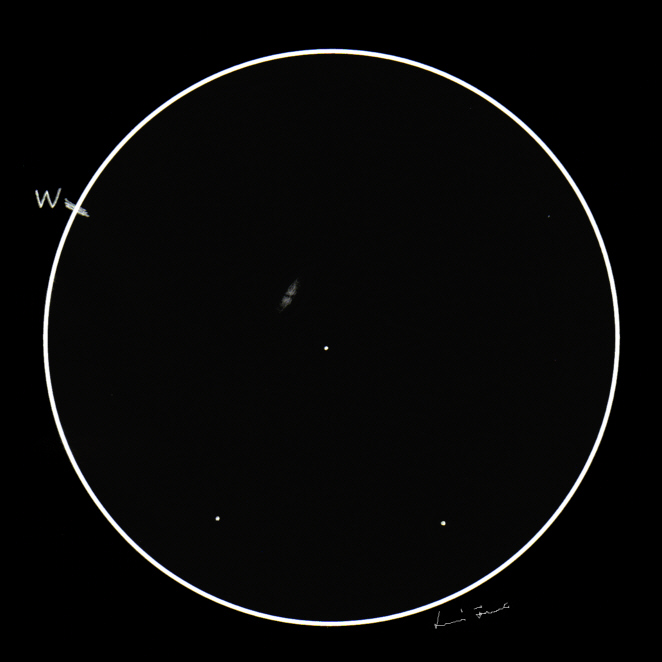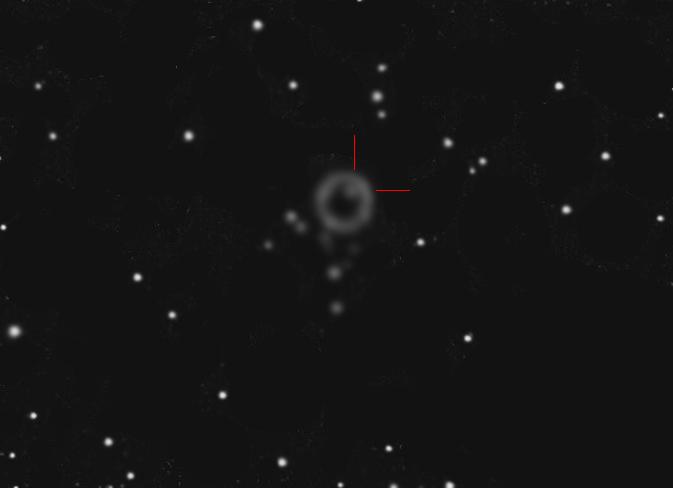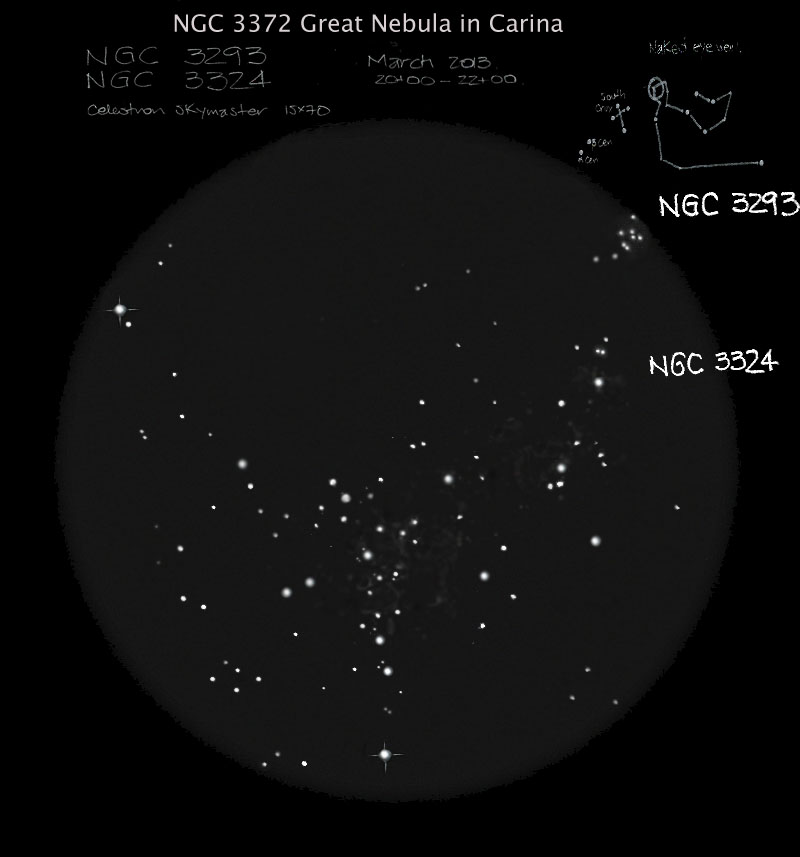
Object name: NGC 3372, NGC3293 and NGC 3324
Object type: Emission nebula, open clusters
Location: Bogotá, Colombia.
Date: March-2013
Media: Graphite pencil on white paper. Scanned, inverted and processed with photoshop.
Equipment: Celestron skymaster 15X70 Binoculars
Hello all,
I don`t really remember which day of March I started doing this sketch, but the day I started it, the moon was high in the sky so I postponed the sketch to catch the most number of stars possible in this vaste region of the sky. However, I had to postpone the sketch for forever due to the cloudy weather and finally I decided to proceed with the information I had.
I started this sketch with no information about the deep sky objects I was watching. I saw a column very rich with stars, most of them unresolved with the binoculars and forming a vaste region denser and whiter than the LP background sky. I also noticed two groups of stars close to the column (NGC 3372): NGC3293 and NGC 3324. The best out of the three was without doubt NGC3293: just 7 stars could be resolved well, but the whole cluster seemed to shimmer and glow.
This region seems to be a hard one to sketch, but I would like try to sketch it again from a less light polluted site.
Thanks to all for watching.
